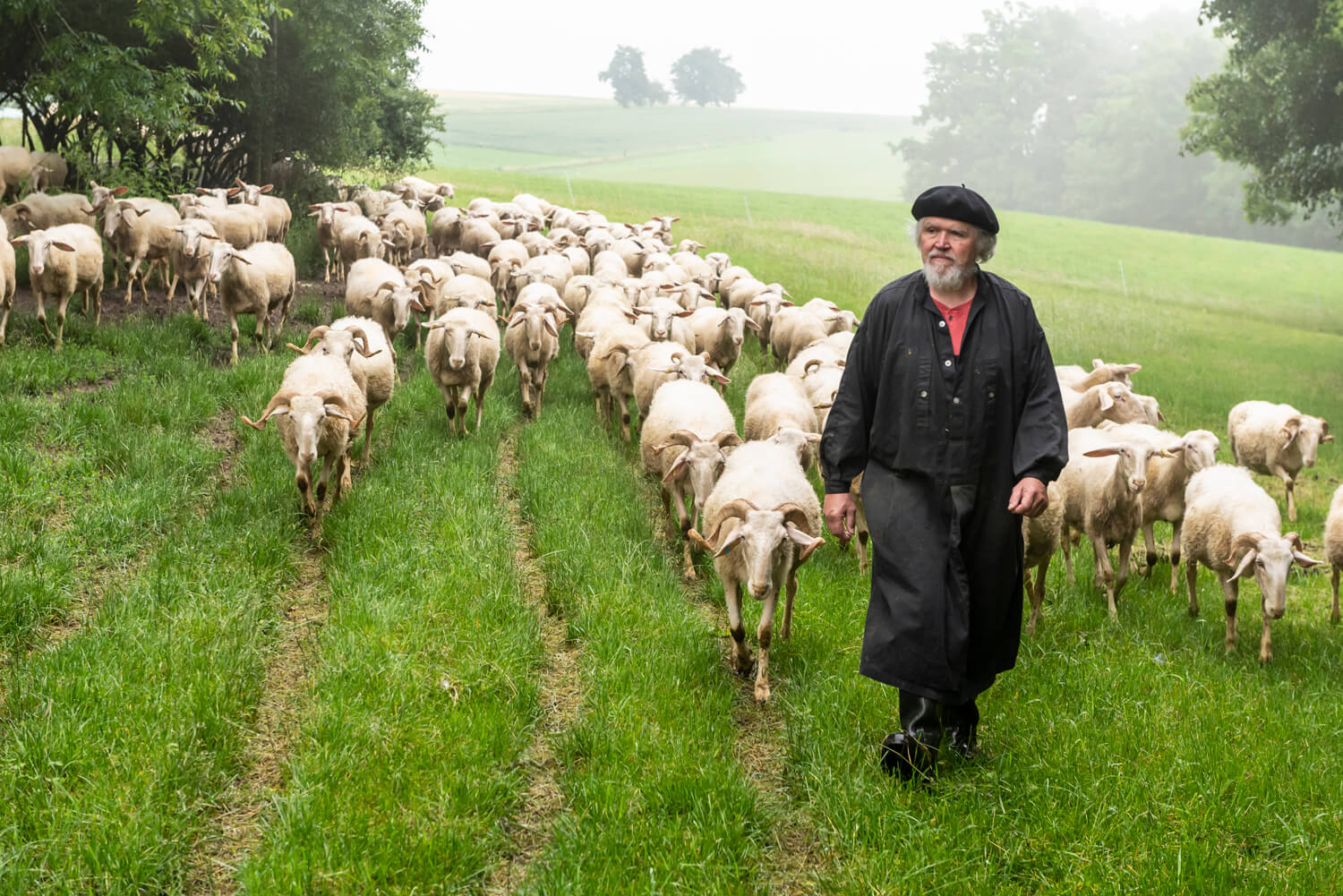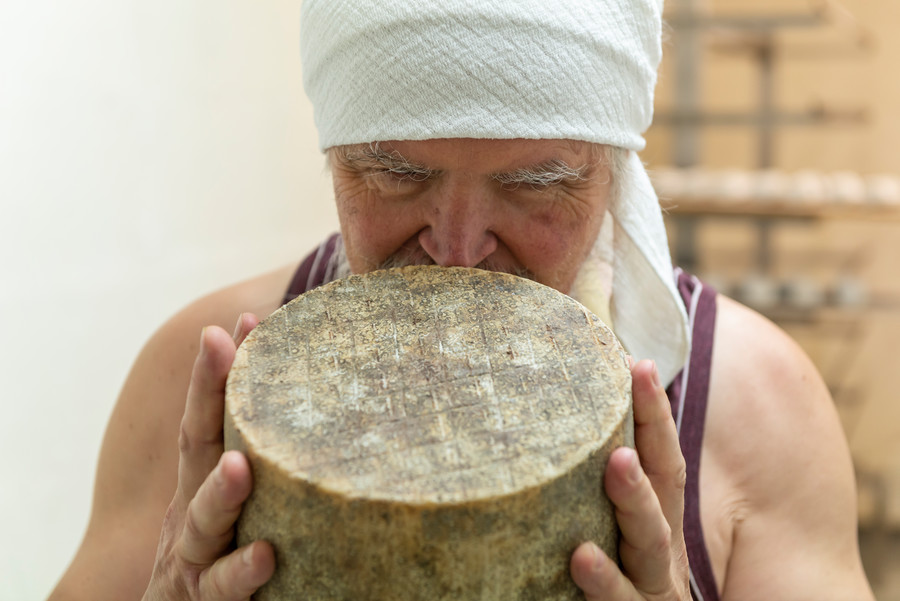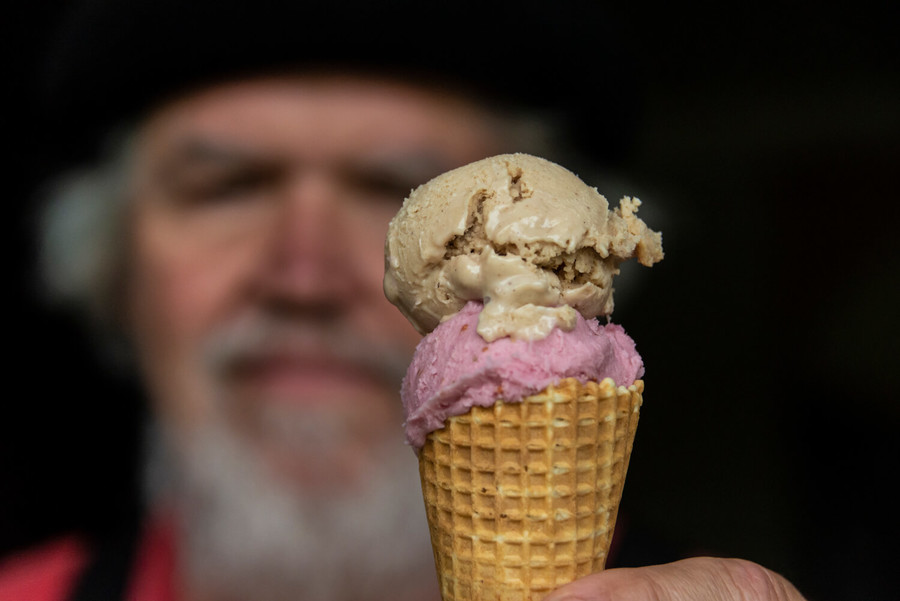Hohenlohe
The shepherd and his flock
© Udo Bernhart


Norbert Fischer looks after some 250 sheep on his farm in Langenburg in Hohenlohe. The shepherd uses their milk to make fine cheese the traditional way, by hand.

Norbert Fischer loves his animals – the 250 sheep spend their days outdoors | © Udo Bernhart
In a temper, she stamps her foot at him, throwing up a small cloud of dust. Unimpressed, Norbert Fischer looks straight into her angry eyes. But, with a little tuft of hay perched on her white curly head, she really doesn‘t look very intimidating. “I suppose I‘d better get out of your way,” Norbert says, with a chuckle, retreating a few steps and climbing over the wooden fence to get out of the enclosure. The old ewe, who has successfully chased Norbert away from her breakfast, digs her head into the haystack and begins to munch. She is not the only sheep to have hay stuck on top of her head. But no matter how much hay they eat, they will not go hungry. The lush meadows of Hohenlohe are all around.
Norbert Fischer’s bio-dynamic farm is located in the unspoiled countryside of the Hohenlohe. Northeast of Stuttgart, this region is known for organic farming. In the early 1980s, this native of Nuremberg leased a small farm in Langenburg, bought two sheep and started making cheese. Twenty years and 250 sheep later, he bought a large piece of land above the town and built a large barn, a cheese dairy, a farm shop and his house. Everything is made of wood and glass, with colourful meadows of flowers on the roofs and lots of love in every corner.

A first-rate hard cheese has to mature for six to 12 months | © Udo Bernhart
| © Udo BernhartMediterranean cheese from Hohenlohe
Now it is off with his black jacket and on with his white apron. Norbert walks into the warm, humid dairy. Today he is making Robiola, a fine Italian soft cheese that he sells at the weekly market. To do this, he heats the sheep‘s milk, still warm from the morning milking, and uses rennet, an enzyme from the sheep‘s stomach, to curdle the cheese. If the milk had known what to expect, it would have stayed in the sheep!
Suddenly, it is no longer milk! It is cut up, swirled around for 20 minutes and even thrown up in the air. Norbert cuts the cheese with two special metal curd cutters, once across and once lengthways. This removes the whey from the curd. More and more stirring extracts more and more liquid, helping the cheese to solidify. To test whether the curd is firm enough, Norbert puts a couple of cubes in the palm of his hand and rolls them around. The consistency seems to be right; with a satisfied nod, the shepherd begins to fill the square cheese moulds with curd. In order to drive the last drops of whey out of the cheese, Norbert turns the small moulds upside down, one after the other, with a loud bang.

Fischer‘s flavours include raspberry, coffee and whey-ginger | © Udo Bernhart
So, how did Norbert learn how to make such good cheese? Where did he acquire the skills? The answer is simple: whenever he tasted a good cheese, he read all about its production and worked to recreate it, continuing until he got it right. In the past 30 years, he has added an aromatic pecorino, a soft camembert and strong blue to his cheese portfolio. All are handmade and originate in the green northeast corner of Baden-Württemberg.
More information on sheep cheeses and travel ideas in northern
Baden-Württemberg: www.schafskaese.com and www.hohenlohe.de
